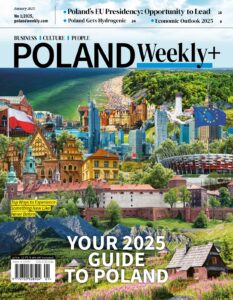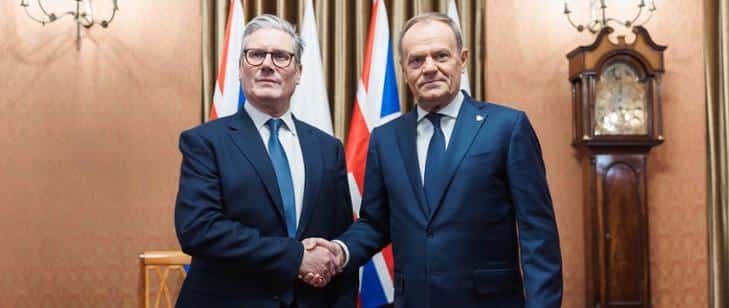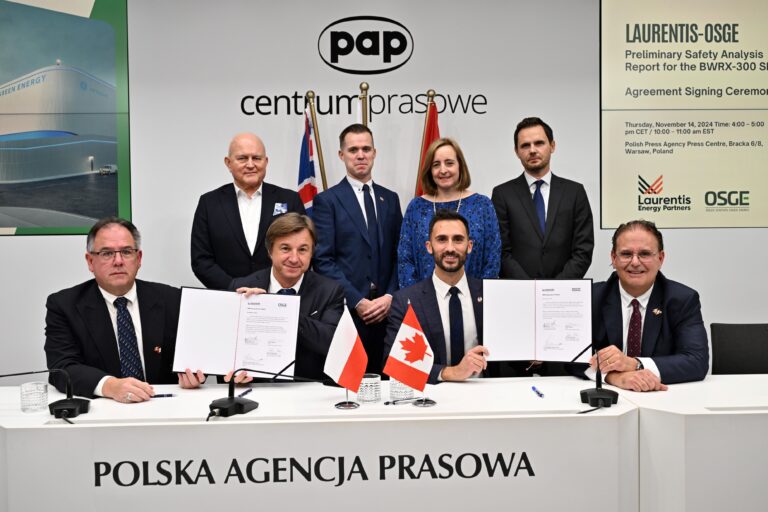Ukrainian refugees on the Polish labor market: opportunities and obstacles
65% of war refugees who came to Poland from Ukraine are working. The current employment rate is currently the highest among OECD countries.
Research conducted by the Polish Economic Institute (PIE) shows that Ukrainian refugees face various challenges in the Polish labor market and sometimes experience unequal treatment. In several of the industries surveyed that do not require specialized qualifications, employers respond less frequently to CVs sent by Ukrainian women compared to those sent by Polish women. The difference of nearly 30% is a signal of potential discrimination at the initial stage of recruitment, according to the latest report: ‘Refugees from Ukraine on the Polish labor market: opportunities and obstacles.’
Poland is one of the countries, along with the United States and Germany, that has taken in the most war refugees from Ukraine. According to UNHCR data, the total number of people arriving in Poland was nearly 960,000, of which nearly 90% were women and children. The most numerous age groups are those aged 27-44 (48%), followed by those aged 45-59 (24%) and those under 26 (18%). Only 9% are over 60.
Ukrainian refugees on the Polish labor market
The employment rate of refugees in Poland is the highest among OECD countries at 65% – in several other European countries it is lower: the United Kingdom (61%), Sweden (56%), Lithuania (53%) and the Czech Republic (51%). In contrast, the lowest employment rates are found in Germany (18%), Switzerland (19%) and Italy (19%).
This high rate of refugee employment in Poland was probably significantly influenced by the large number of Ukrainians working in the country before the Russian invasion in 2022. Compatriots were able to help newcomers find employment, housing and provide organizational assistance.
Refugees most often find employment as manual workers, as well as in tourism and hospitality, manufacturing, logistics, IT and construction. The best paid refugees (and pre-war migrants) work in IT and transport.
It is noteworthy that refugees are relatively more likely than pre-war migrants to be working below their qualifications, 46% and 32%, respectively. Here, knowledge of the Polish language is key, enabling better matching of employment to skills and qualifications. The employment rate for refugees with Polish language skills was 82%, while for those without Polish language skills it was only 50%.
Challenges of refugees in the labor market
Part of the PIE’s research consisted of in-depth interviews with refugee women and refugees from Ukraine. The purpose of the interviews was to understand the interviewees’ experiences, attitudes and challenges to professional and social integration in Poland. Interview participants were predominantly women, who make up the majority of refugees arriving in Poland in 2022.
“War refugees are a heterogeneous group of people with different skills, experience and professional aspirations. Despite these differences, they are united by difficulties of an emotional nature, present in the daily challenges of adaptation. These include feelings of loneliness, confusion, uncertainty, lack of loved ones or fears about securing decent living conditions in a new place of residence,” says Radosław Zyzik, senior advisor of the PIE’s behavioral economics team. “Some refugees clearly feel a longing for their country and loved ones, which affects the adaptation process. And this is compounded by the change in social status and loss of economic security,” he adds.
“The interviews showed that refugees in Poland face a variety of challenges in the labor market, often requiring them to be flexible, resilient and adapt in a new environment. Discrimination based on nationality is not a common phenomenon. Those who have experienced it or have heard of incidents bearing the hallmarks of discrimination from others point to inadequate remuneration for work, exploitation of a weaker position in the labor market, unequal treatment and workload and hurtful stereotypes. Refugees also face difficulties in having their qualifications accepted and often work below their skills or in the informal economy. Despite the challenges and difficulties, it is important to emphasize that Ukrainian refugees in Poland perceive and appreciate the support they receive – both that provided by public institutions and international organizations, and especially by civil society,” says Zyzik.
Preferred CVs of Polish female candidates
The PIE experiment consisted of searching for job offers posted on recruitment websites and sending pairs of CVs of fictitious female candidates to them: A Polish woman and a Ukrainian woman arriving in Poland in 2022. The application documents were as similar to each other as possible.
The search for offers took place at two levels covering: 1) lower-level positions that did not require higher education and experience and 2) specialist positions that required higher education and experience.
“The results of the experiment allow us to conclude that in industries that do not require specialized qualifications, employers respond less frequently to job applications sent by Ukrainian women, compared to CVs sent by Polish women. The percentage of callbacks to applications was 27.6% for a Polish female candidate and 19.5% for a Ukrainian woman. Thus, there are indications of potential discrimination against Ukrainians at the stage of pre-selection of submitted offers. In the case of positions requiring higher qualifications, this difference was not statistically significant, which does not allow a clear conclusion of the existence of discrimination. It is worth recalling that experiments of this type are a proven method of demonstrating so-called statistical discrimination and have many applications. In a similar study, the PIE demonstrated age discrimination in the Polish labor market,” explains Łukasz Baszczak, a senior analyst on the behavioral economics team.
Labor market discrimination against refugees a common phenomenon worldwide
In OECD countries, this form of labor market discrimination has been the subject of research and analysis over the past 25 years. Candidates from ethnic, national or racial minorities have had to send significantly more applications than candidates not belonging to these groups in order to receive an invitation to an interview. Similar results in similar experiments have also been obtained in other countries. For example, a study in Sweden observed a significantly lower callback rate for migrants (2.5%) than for native Swedes (19%). It did not matter whether the migrants had work experience or even citizenship.
Research in 20 European countries confirms the fact that forced migrants perform worse in the labor market compared to natives and economic migrants.







